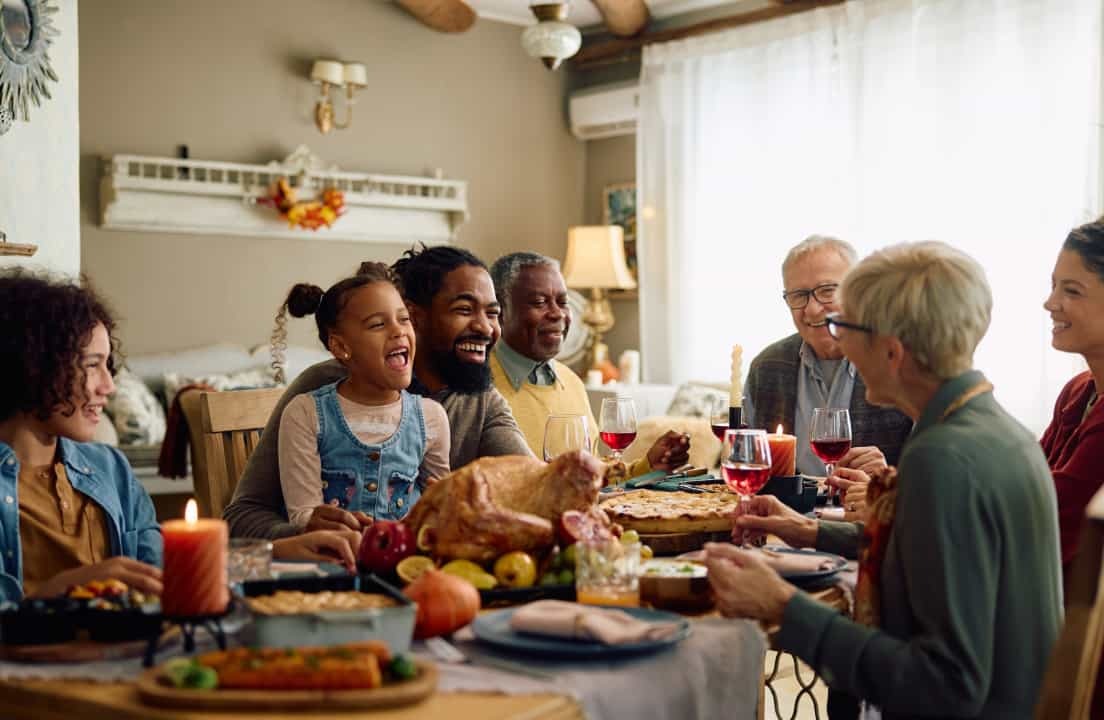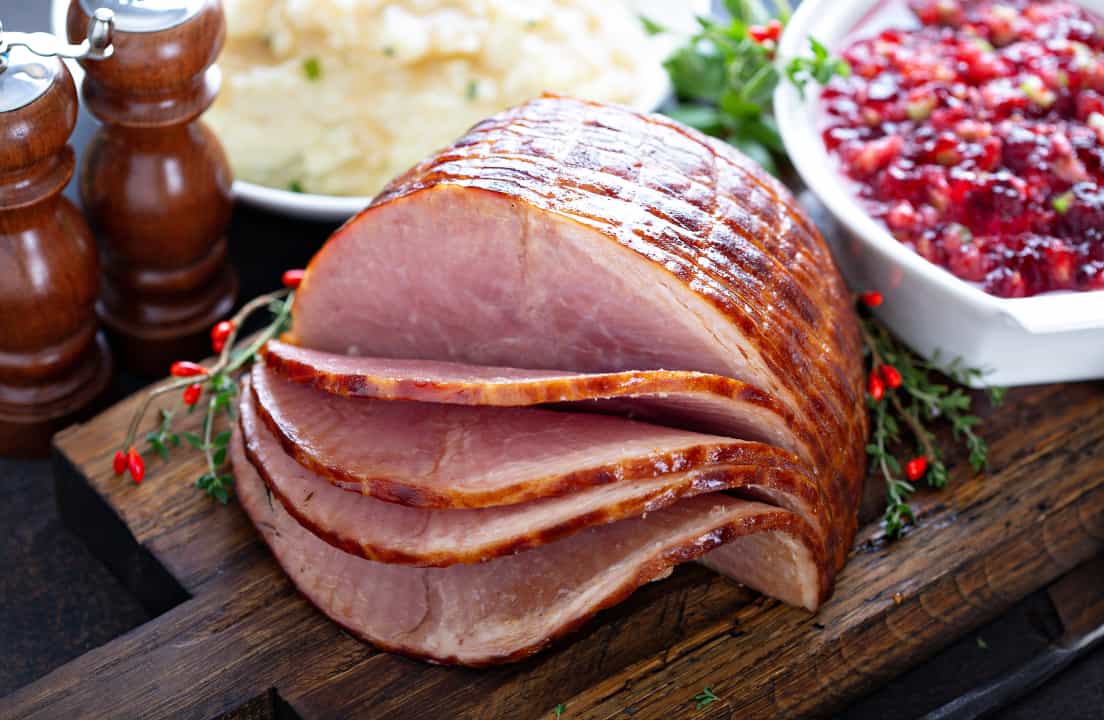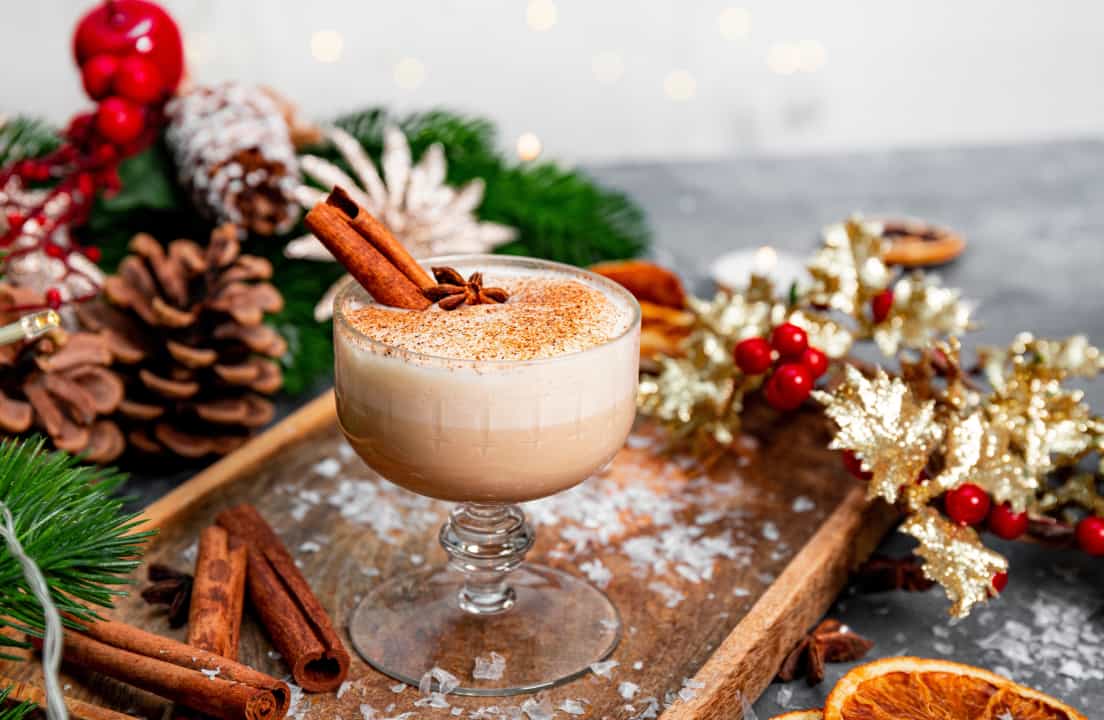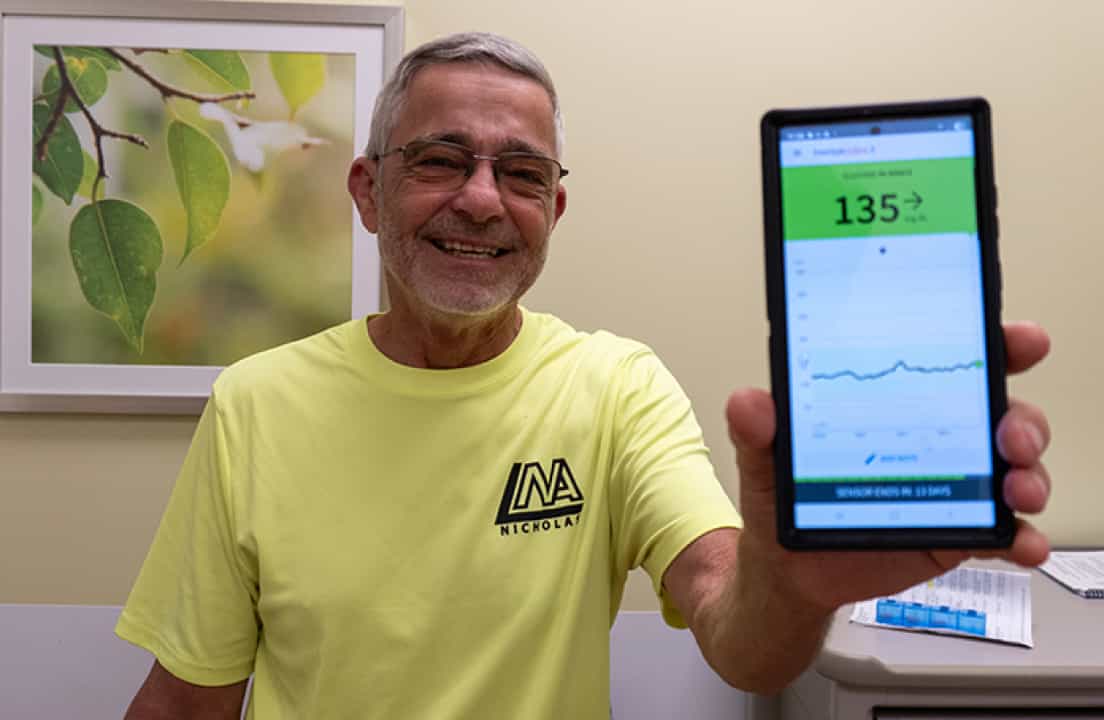T1D Guide
T1D Strong News
Personal Stories
Resources
T1D Misdiagnosis
T1D Early Detection
Research/Clinical Trials
Type 1 Diabetes: The Hidden Blood Sugar Impact of Holiday Foods
Holiday gatherings are filled with familiar sights and smells. Plates arrive heavy with nostalgia. Tables fill with casseroles, warm breads, rich sauces, and desserts that only seem to appear this time of year.

For people with type 1 diabetes (T1D), this season adds another layer: trying to understand how these foods will affect blood sugar levels.
While many expect sugary treats to cause a fast spike, the real surprises often come from the foods that don’t look sweet at all. These “hidden” impacts are why holiday meals can lead to unpredictable highs, stubborn lows, or long nights of checking blood sugar.
This guide explains why holiday foods behave the way they do and how to plan without sacrificing the joy of a special meal.
Why Holiday Foods Are Especially Tricky
Holiday meals often combine the exact factors that make blood sugar management more challenging.
These meals are usually:
- Higher in fat.
- Larger portion size.
- Spread out over several hours.
- Served with alcohol.
- Cooked with extra sugar or sweet glazes.
- Eaten during long breaks from everyday routines.
Even people who feel confident counting carbs the rest of the year often find these meals confusing. This feeling is not a sign of failure or poor management. The meals themselves are simply built differently.
For example, a slice of ham may look low in carbs, but many cooks glaze it with honey or brown sugar.

Mashed potatoes might seem predictable, but they often include butter, cream, or cheese. A casserole might contain vegetables, but adding cream soup, fried onions, or breadcrumbs adds carbs and fat.
All of these pieces affect how quickly or slowly glucose rises.
How Fat and Protein Delay Digestion
Sugar causes a fast rise in blood glucose. But holiday foods usually create a second wave hours later.
This wave is because fat slows down digestion. When a meal is high in fat and carbs, the stomach empties more slowly. This means glucose enters the bloodstream later than expected. People may see a modest rise after eating, feel relieved, and then experience a sharp spike three or four hours later.
Protein can also raise blood sugar later in the evening, especially when eaten in larger amounts.
Common examples of foods that create delayed rises include:
- Mac and cheese
- Stuffing
- Sweet potato casserole
- Mashed potatoes with butter or cream
- Cheesy vegetable casseroles
- Pies
- Ice cream
- Cookies made with butter or shortening

The delayed rise does not mean you did anything wrong. It reflects how the body digests mixed meals.
Holiday Foods With Hidden Carbs
Some of the biggest surprises come from foods that look simple but contain added sugar, flour, or high-fat ingredients. Below are common holiday dishes that can cause unexpected spikes in blood sugar levels.
Sauces and Glazes
Many sauces may seem like a small part of the meal, but they can still carry a significant amount of carbs.
Examples include:
- Cranberry sauce
- Honey or brown sugar ham glaze
- Sweet chili sauces
- Fruit reductions
- Thick gravies with flour
Glazes stick to meat surfaces and may be difficult to measure accurately because the amount varies from slice to slice.
Casseroles and Mixed Dishes
Casseroles are hard to estimate because it is difficult to know how much of each ingredient is in one scoop.
A typical serving may include:
- Cream soup
- Butter
- Cheese
- Breadcrumbs or fried onions
- Extra sugar
A “vegetable” dish can turn into a high-carb, high-fat dish depending on the recipe.
Drinks That Act Like Desserts
The holidays bring a long list of seasonal beverages.

Common examples include:
- Eggnog
- Hot cider
- Mulled wine
- Sweet cocktails
- Seasonal lattes
- Mocktails made with syrups or juice
These drinks can raise blood sugar quickly because most are made with sugar or fruit juice. Some also contain alcohol, which has its own impact.
Appetizers and Small Bites
Many people graze during holiday events. These small bites can add up quickly.
Common examples include:
- Crackers
- Chips
- Cheeses with sweet jams
- Meatballs in sugary sauces
- Mini quiches
- “Bacon-wrapped” appetizers with sugary glazes
Snacking before dinner can make mealtime dosing even more complicated.
Alcohol and Blood Sugar During the Holidays
Alcohol affects blood sugar in different ways depending on the type of drink and whether food is eaten with it.

The liver works to remove alcohol from the body. While doing this, it has trouble releasing stored glucose. This process can lead to lows later in the night, especially if a person goes to sleep soon after drinking.
Meanwhile, drinks mixed with soda, juice, syrups, or liqueurs can cause a fast rise followed by a drop.
Common patterns include:
- Sweet cocktails that spike blood sugar.
- Beer that raises glucose due to its carb content.
- Wine that may cause a slight rise.
- Spirits mixed with juice or soda create a fast spike.
- Delayed lows after alcohol, especially overnight.
It can help to:
- Avoid drinking on an empty stomach.
- Carry glucose tabs.
- Check blood sugar more often.
- Tell a trusted friend how to help if you have a low.
- Wear a medical ID.

How to Plan Without Losing the Joy of the Holiday
The goal is not “perfect” numbers. The goal is to feel steady, safe, and able to enjoy the holiday without fear or shame. Planning may help reduce the surprise factor.
Eat Regular Meals
Skipping breakfast or lunch to “save up” for a big dinner often backfires. It leads to intense hunger, fast eating, and a rapid rise in glucose levels.
Eating balanced meals earlier in the day can help keep blood sugar steadier.
Check Portions, Not Perfection
Holiday portions are larger than usual. A scoop of mashed potatoes at a holiday meal may be twice the size of a typical serving.
Some people use visual cues such as:
- A fist-sized serving of carbs.
- A palm-sized portion of protein.
- Filling half the plate with vegetables when possible.
These tools aren’t perfect, but they offer a starting point.
Take Time Between First and Second Servings
A short break can help you check in with your hunger and know if you truly want more. This pause can also give blood sugar a moment to show where it’s heading.
Understand That Strategies Vary
Some people with T1D use extended boluses, dual-wave boluses, or split dosing for meals high in fat. Others find that smaller, repeated doses are more effective. What works best depends on each person’s care plan and the type of insulin they use.
Work with your care team to understand what strategies are safe for you.
Bring a Familiar Dish When Possible
If you are eating away from home, offering to bring a dish you're confident in can remove some of the guesswork.
Many people with T1D find it helpful to bring:
- A protein dish
- A vegetable dish
- A lower-carb dessert
- An appetizer with simple, known ingredients
Taking these proactive steps can help alleviate uncertainty about every item on the table.

Keep Supplies Close
During the holidays, time moves both slowly and quickly. Catching up with loved ones can help us be present, but it can also make the day fly by, allowing food and diabetes management to fall into the background.
To make sure T1D still gets the main character attention it calls for, it can help to carry:
- Glucose tabs
- Extra snacks
- Pump or pen supplies
- A spare CGM sensor
- Back-up batteries or chargers
Small steps like these offer peace of mind.
The Emotional Side of Holiday Eating
Holiday meals are not only about food. They are also tied to family traditions, cultural identity, and memory. For many, these meals represent comfort and a sense of connection.
It is normal to feel:
- Pressure from loved ones.
- Guilt around food choices.
- Frustration when numbers do not match your effort.
- Anxiety about eating in a group.
- Worry about how others may react or comment.
These emotions deserve space. Diabetes management does not diminish the enjoyment of a holiday meal.
Use these mantras to start the holidays strong and centered:
- You do not owe anyone an explanation for what you choose to eat.
- You do not have to finish everything on your plate to be polite.
- And you do not have to pretend the holidays are simple when they are not.
Real-World Scenarios and How to Navigate Them
The holiday season brings situations that even the most experienced person with T1D can find challenging. Below are common moments and ideas that may help.
“Dinner Is Served Early… and Then Served Again Later”
Some families eat appetizers at noon, a big meal at 2 p.m., and dessert at 5 p.m. This pacing can cause blood sugar levels to swing if doses are stacked too closely together.
A helpful approach may be:
- Treat each eating period as its own meal.
- Check often.
- Keep fast carbs nearby.
- Take a short walk.
“I Underestimated the Casserole”
Many casseroles contain more carbs and fat than expected. If you see a delayed spike three or four hours later, you are not alone.
This happens because the fat slows down the digestive process. A slow, steady rise is common.
“The Dessert Table Is Calling”
Desserts are part of the season. If you want dessert, you do not need to avoid it. Eating a smaller portion, pairing it with protein, or waiting until after a walk helps moderate the rise.
“I Forgot to Bolus Before Eating”
Holidays move fast. If you forget, you are human. Administer insulin as recommended by your healthcare team, stay hydrated, and monitor your condition.
“Everyone Wants Me to Try Their Dish”
It is okay to decline. A simple “It looks great, thank you” is enough. And if that fails, “No” is a complete sentence.
When to Reach Out to Your Care Team
You may want to check in with your care team if you:
- Notice consistent delayed highs.
- See frequent overnight lows.
- Are unsure how to dose for high-fat meals.
- Feel anxious about holiday eating.
- Want help adjusting your insulin plan.
A short conversation can help clarify what tools or settings may support you.

You Deserve a Holiday That Feels Steady and Enjoyable
Holiday foods are not predictable. They combine carbs, fat, timing changes, shifting routines, and emotions that run deep. But with preparation, awareness, and support, you can enjoy the foods you love without fear or shame.
You are not required to “perfect” your blood sugar to have a meaningful holiday. You are allowed to enjoy your traditions. You are allowed to rest. You are allowed to try again if something does not work the first time.
The goal is not perfection. The goal is presence: Your plate, your pace, your power—this holiday and every one that follows.








.webp)

.jpeg)

.webp)
.jpg)



.jpg)




.jpg)

.jpg)



.jpg)

.jpg)




.jpg)
.jpg)
.jpg)
.jpg)
.jpg)
.jpg)
.jpg)

.jpg)
.jpg)

.jpg)



.jpg)
.jpg)
.jpg)

.jpg)

.jpg)














.jpg)


.jpg)






.webp)











.webp)



















.webp)







.webp)